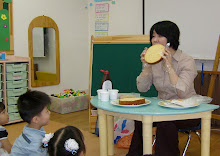I have been heard the term, plagiarism since I studied in TESOL-Mall because many students commit plagiarism without awareness. When I heard of plagiarism in my work, I was so surprised and curious about it. I had never thought of ‘textual ownership’ (Yamada, 2003, p.248) and the fact that writers have to borrow their texts and ideas using quotation marks for direct citation or paraphrasing them. According to Yamada (2003)’s research, when writers paraphrase source texts they must understand sources’ information first, and need inferential skills to develop and create the meaning of the sources. However it is not easy for anyone, especially for unskilled readers who cannot inference authors’ thoughts.
Since reading Yamada (2003)’s paper, I have been thinking what reading is and how I teach proper reading skills to young EFL students. Good readers, who can understand writers’ intentions, will be good writers who can create their own meaning. I hope my students will not struggle to paraphrase writers’ voices but expand and strengthen the knowledge of the language (Scott & Ytreberg, 1990).
Scott, W.A.,& Ytreberg, L.H.(1990). Teaching English to Children. London: Longman Keys to Language Teaching.
Yamada, K. (2003). What prevents ESL/EFL students from avoiding plagiarism? : Analyses of 10 North American websites. System, 31, 247-258.
Subscribe to:
Post Comments (Atom)

hmmm . . . I don't want to comment too much, but I wonder how the other students will see this perspective?
ReplyDeletehow does this approach fit into the post-modern world?
-e
You try to make a connection between plagiarism and your EFL students' reading skills. A good point. I believe your students won't have much difficulty in dealing with plagiarism because they have such a thoughtful teacher as you. ^^
ReplyDelete